If you've never ridden a sidecar motorcycle before, you may not know this. But so many people want to talk to you. They smile, they wave, they yell excitedly across the street at you in traffic. And it's almost never in an angry way. Usually, it's in a very excited way.
People who might not otherwise even care about motorcycles get an instant smile on their face when they see you. And if you're one of the many sidecar owners who chooses to ride around with their dog in that chair, oh, friend, you're gonna meet SO MANY PEOPLE.
IMZ-Ural isn't the only company in the world to make sidecars, but it is 100% the most famous. And it has been that way for a very long time. Other companies have made sidecar rigs to fit other motorcycles; I've personally seen Moto Guzzis, BMWs, and even Honda Super Cubs, Monkeys (and Super Cub lookalikes) with sidecars that someone's put together for them. But over at Ural, the essential aesthetics behind the Gear Up variants you can buy in 2025 have remained largely unchanged for decades.
Ural fans like what they like, and while there have been significant technological advancements made (hey, Brembo brakes are absolutely a great upgrade!), from a distance, it's safely remained the same Ural you know and love. Maybe with a nice new coat of paint, or a limited edition design, or customizable everything that you can special-order if you're willing to splash out some extra cash.
All that is about to change with the introduction of the Ural Neo 500.
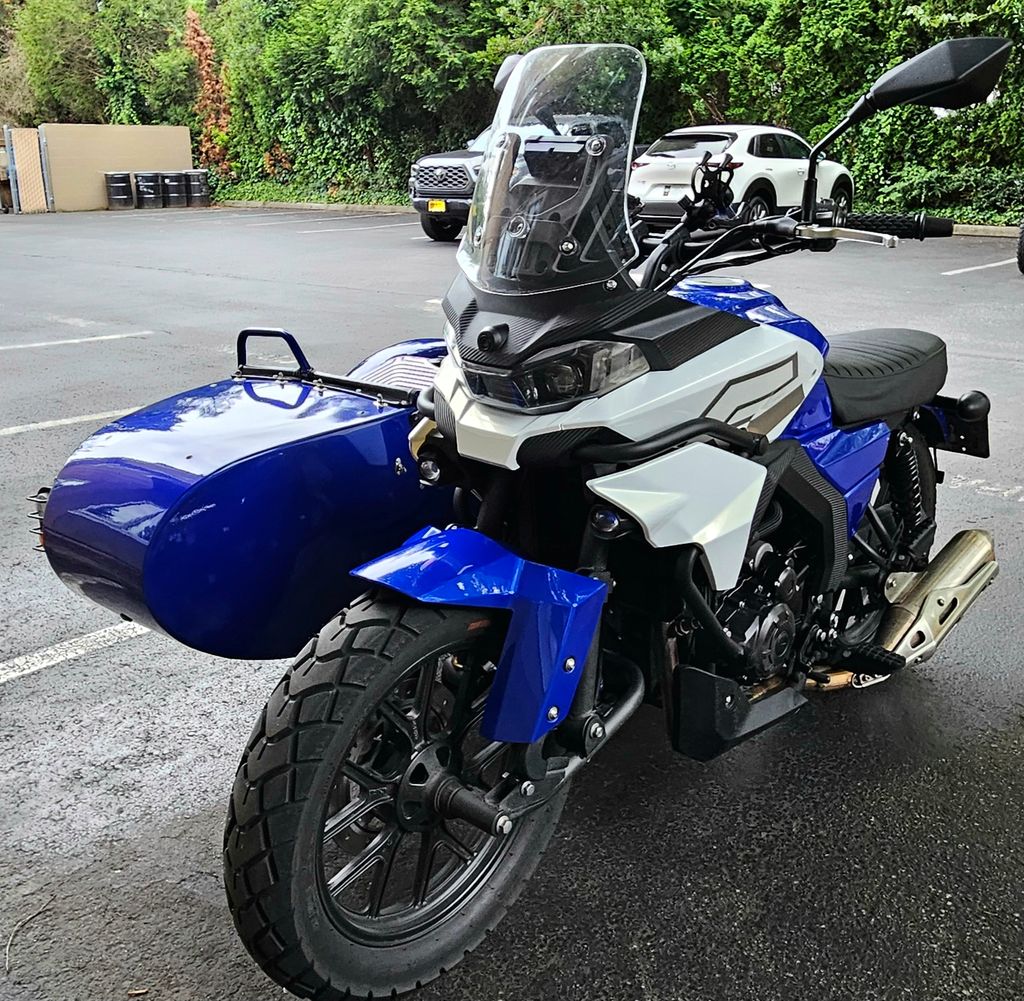
The company invited me out to the Seattle, Washington area to ride the one and only prototype in the US in person, and I'm going to tell you all about the bike right now. For a detailed travelogue about where I went with this bike, you can read that here in a separate piece.
An important note before we get into it: The Ural Neo 500 that I rode is a prototype. Features on this bike may or may not be present on the production machine once it's available to purchase. Appearance, finishes, and other details may also change between now and then.
Now that we're clear on that, let's dive in, shall we?


Wait, That's a Ural?
The phrase "you never get a second chance to make a first impression" might sound trite, but that doesn't make it any less true. From the moment you first lay eyes on the Ural Neo 500 Prototype, it's clear from the design language that this is a bike that's firmly facing the present and maybe even the future, not looking like it'd be right at home in the past.
Where the Ural Gear Up platform is all classic lines and wire-spoke wheels, the Ural Neo 500 platform clearly throws some modern ADV styling into its much more angular lines. At the same time, you know it's more concerned with street-roaming ADV style than true adventure focus thanks to its 17-inch alloy wheels wrapped in tubeless tires. The suspension will also tell you this as well, but that won't be until you start riding it. Also, Ural tells me it's one of the things that they're still tweaking, so it will most likely be different on the production Neo 500.

That's the impression of the bike, but what about the sidecar?
Chatting with Ural about their plans for the production Neo 500, they told me that the diamond-stitch interior of the sidecar as seen on this prototype is one of the things they're not completely sold on, and that may very well change before it goes into production. Taken independently of the whole, I kind of like it. Is it just the right amount of quirky, or is it too much? That opinion, like many others, will likely be subjective.
Speaking of the sidecar, it's a slightly different size than the one on the Gear Up, as well. It's smaller, but not by much. One person from Ural told me that they'd had a friend over six feet tall sit in the sidecar and go for a ride, and they said they felt fine in it. Obviously, at my height of 5'3" and with my short little legs, I'm not the correct person to tell tall people about legroom. But if you're short like me, I can tell you that you'll probably have more than you need.
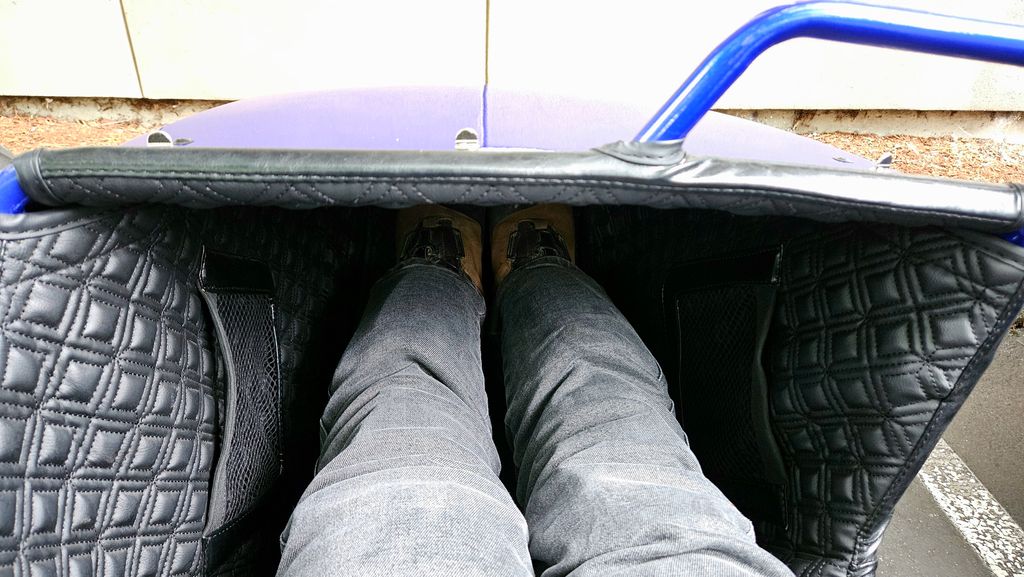
If you're a Gear Up owner, or you know someone who is, it's worth noting here that Ural told me the current tonneau cover for the Gear Up does not fit the sidecar for the Neo 500. While it isn't much smaller (they say), it's different enough that the tonneau cover will not be cross-compatible. Much like the Neo 500 Prototype itself, it's a small thing, but still, it's something to keep in mind.
Sidecar and lockable trunk space are ample. I was able to ferry my checked bag, helmet bag, and backpack full of all my other necessary stuff for a motorcycle trip very comfortably, with no problems. The Neo 500 Prototype didn't have a top rack on the trunk, but it's not clear if one will be available as an accessory. I can only imagine it will be, though.
Let's Talk About the Powerplant and Controls
The Ural Neo 500 Prototype's differences from the legacy Gear Up platform are far more than skin deep. This new, comparatively small entry into the Ural lineup is powered by a 500cc liquid-cooled parallel twin engine that's mated to a five-speed gearbox (well, five speeds plus the very helpful Reverse gear). At present, Ural's claimed power figures here are 35 horsepower at 8,500 rpm and 34 newton-meters (just over 25 lb-ft) of torque at 6,000 rpm, but I'm told these numbers could still change for the production model.
According to Ural, part of what they were interested in pursuing with the Neo 500 is bringing riders into the sidecar fold who might have found the Gear Up too big and intimidating to use. And I have to say, as a smaller person who has ridden a Gear Up (both as the pilot and in the chair) before, there's a noticeable difference in ease of use.
Granted, I'm in a bit better shape than I probably was when I rode that Gear Up years ago. While I'm not going to be entering any pull-up competitions any time soon, my upper body strength is certainly better—and that's a thing you kind of need if you're going to ride a Gear Up. It's a lot of work. On the plus side, if you like getting a good upper body workout in with your time in the saddle, then the Gear Up practically sells itself!
The Neo 500 Prototype, by contrast, is quite a bit easier to steer. I wouldn't go so far as to say that it's outright easy; you're still going to notice a significant difference between the handling experience on the Neo 500 as compared to, say, just about any two-wheeled motorcycle. A sidecar makes a significant difference, even if the rig isn't 2WD (the Gear Up was 2WD; the Neo 500 is not).
Shifting takes some getting used to, as well. Instead of shifting four up and one down (with Neutral in between 1st and 2nd, like most modern 5-speed motorcycles), the Ural Neo 500 Prototype has Neutral on the bottom, then all five gears up.
How do you get into Reverse? There's a lockout on the right handlebar that you have to activate before you kick it down from Neutral. Then you'll see a telltale R show up on the big tablet TFT display (we'll talk more about this display in a minute), and you'll also hear a steady beep-beep-beep Reverse backing tone that you can't miss. The entire experience of getting into Reverse makes it incredibly hard to see how anyone could ever find themselves in Reverse by accident.
There's also a little mechanical parking brake that consists of a switch you use to lock the front brake lever in place if you're, say, parking on a hill. It's an ATV-style thing, but I'm told it doesn't comply with existing parking brake standards on road-going motorcycles in the US. So, while it's present on the prototype, it's another thing that will more than likely change when the Neo 500 goes into production.
That Tablet, Though
Standing tall and vertical like a digital rally tower, the TFT dash on the Ural Neo 500 prototype is clear and easy to read, even in bright sunlight. I got to experience a range of weather conditions in the short time I was in the Seattle area, going from a foggy, overcast, mysterious morning to a bright, almost blindingly sunny (and hot) afternoon.
The tablet displays a lot of useful information (what gear you're in, RPM, your current speed, battery voltage, current mileage, trip mileage, and so on). I'm sure it can also display even more if you go through all the modes and menus and change things to suit your preference. Since I only had a limited amount of time and wanted to gather strong riding impressions, I didn't spend a ton of time getting deep into the menus (I figure it makes more sense to do that with the production bike than the prototype, since it's likely to change).
One thing the prototype had that may not be present in the production bike is a built-in dashcam. If you connect your phone to the bike via Bluetooth, you can apparently even view it remotely. However, I didn't find out about the dashcam until after the fact, so I didn't get to try this feature for myself. And it might not even matter, since it might not be present in the finished bike.
There's also a USB socket up near the tablet and handlebars, so you can plug your phone in and keep it charging. I found it to be charging a bit slow when I used it, but that could also have been the cable I was using. Once again, since this is a prototype, hopefully, charging speed is something that won't be an issue on the production version.
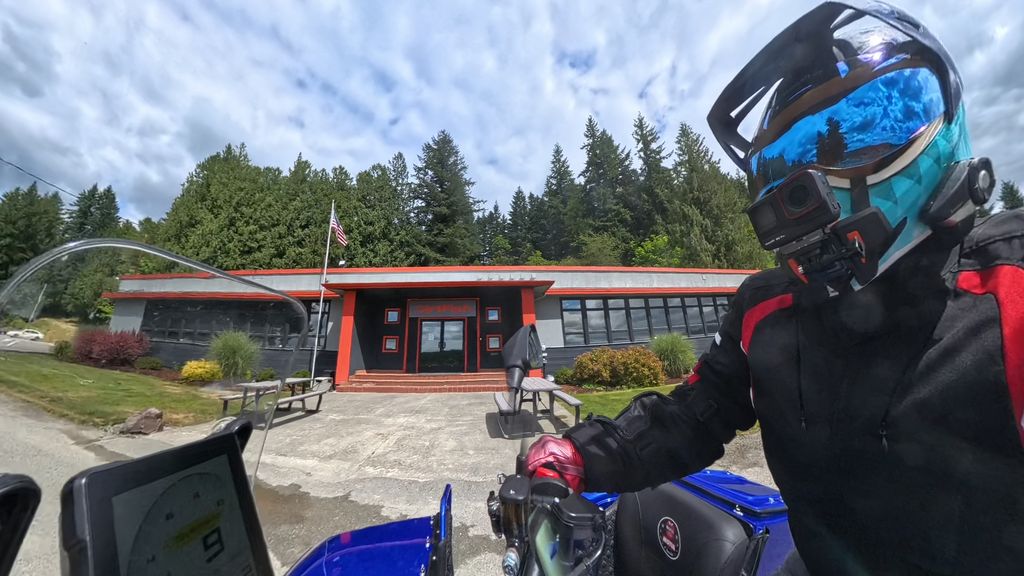
But What's It Like To Ride?
I'll be honest; I wasn't expecting a parallel twin to be as buzzy as this one is. I've ridden single-cylinder engine bikes that are smoother (thanks, counterbalanced crankshafts!). Your personal feelings on whether this is a good or a bad thing will vary; I will say it wasn't uncomfortably buzzy, especially once I got to know the Neo 500 Prototype and little by little, found out how it wanted to be ridden. That took maybe 10 miles or so, I'd say?
The gearing is quite low, and I've been told by Ural that while they're aware that it's low, you'll want ratios like these if you're carrying a passenger in the sidecar, or any other similarly weighty load. Since my luggage wasn't very heavy (probably 30 pounds at the most; probably less, since I was wearing all my gear instead of stowing it), I can tell you that I found using 1st to only really be useful in parking lots. But your experience may differ if you're carrying something (or someone) heavier in the sidecar.
Pulling away from a dead stop (like at a stop sign or stoplight) was best done in 2nd. It was much smoother and felt more stable and planted, especially with all the hills and valleys and elevation changes and curves, and dips found in and around the Seattle area. Second and third are where the power is on this bike, out on the road; fourth has a little but kind of lets off, and fifth is for cruising.
The brakes work decently; as I frequently say with a lot of things I ride, it's not a superbike. So, as long as you're allowing yourself time for the brakes to do their thing, and you don't have unrealistic expectations of superbike brakes on a bike that clearly isn't, you'll probably have a fine time.
Both the front and the rear brake work as you'd expect, though they may also receive additional refinements by the time the production model rolls out. At one point, I mistakenly left the parking brake on and tried to go up a hill in a residential neighborhood, but I quickly realized my mistake and took the parking brake off. Don't be like me, and you'll be fine!
The Elephant In The Room
The Ural Neo 500 Prototype was made to Ural's specifications by a Chinese manufacturer called Yingang. Unlike the Gear Up line (which Ural is now internally referring to as its 'legacy' product line), the production Neo 500 will be made in China, not Kazakhstan (where Ural Gear Ups are currently made).
This might have some people feeling a certain kind of way about this bike before they ever even ride it for themselves. There's a lot of hate from Western riders on Chinese-made bikes; some justified, and some not.
As a person who's ridden a fair number of things, I think it's worth considering that not every ANYTHING is going to always be good, and not every ANYTHING is going to always be bad. We all generally love Ducati designs, right? And yet, Ducati made the Indiana at one time, which is widely considered by many to be, uh, kinda hideous. See, no one's perfect!
Everyone can make both good and questionable choices, regardless of where they originate in the world. The human condition: Welcome to it! You have to take things on a case-by-case basis and come to your own conclusions based on your experience, not just accept as a given what someone else has told you.
I also say this as a person who's experienced soft, terrible steel screws on some Chinese-made products that feel like they're made out of cheese rather than metal. You know, the ones that are super easy to strip if you don't have your bit perfectly straight when it's seated before you start to turn them?
And it's here that I should tell you that I did end up taking the side cover off of this Ural Neo 500 prototype at one point. Let me explain.
As the one and only prototype in the country, this particular bike has been ridden a whole bunch over the short time that it's been on US soil. So, unfortunately, its original battery had died, and I used my travel tool kit to pull the left side cover off so one of the Ural folks could swap it out with a brand new one.
The new battery totally did the trick, and there were zero issues to report after it was switched out. Not a big deal (if you've been riding for any length of time, you've probably dealt with a dead battery at some point), and I probably wouldn't have mentioned it here—except it's how I stumbled onto something that I do really want to tell you about.
Which is, admittedly rather strangely, the screws on that side cover that I had to remove to access the battery.
You can take this experience for what it's worth, as I didn't go deep into the bike at all. However, what I want to tell you is that the screws felt pretty reasonable and robust. They did not feel like they were particularly fragile, nor did they feel like the heads were going to strip out while I was using my little 6mm hex bit inside my tiny little travel ratchet.
It's a small thing, but I think it bodes well and is the start of a positive impression of the build quality of this Neo 500 prototype. Hardware matters; after all, if you wrench on any bike, you're going to have to unscrew and put back together plenty of things on your new (or new-to-you) machine for regular maintenance. Bad screws and hardware you have to fight to remove are an absolute nightmare that you don't want.
For what it's worth, the Neo 500 prototype does not appear to be a fragile, poorly put-together thing. And if you automatically assume that it is simply because of where it originated, then you may just be missing out.
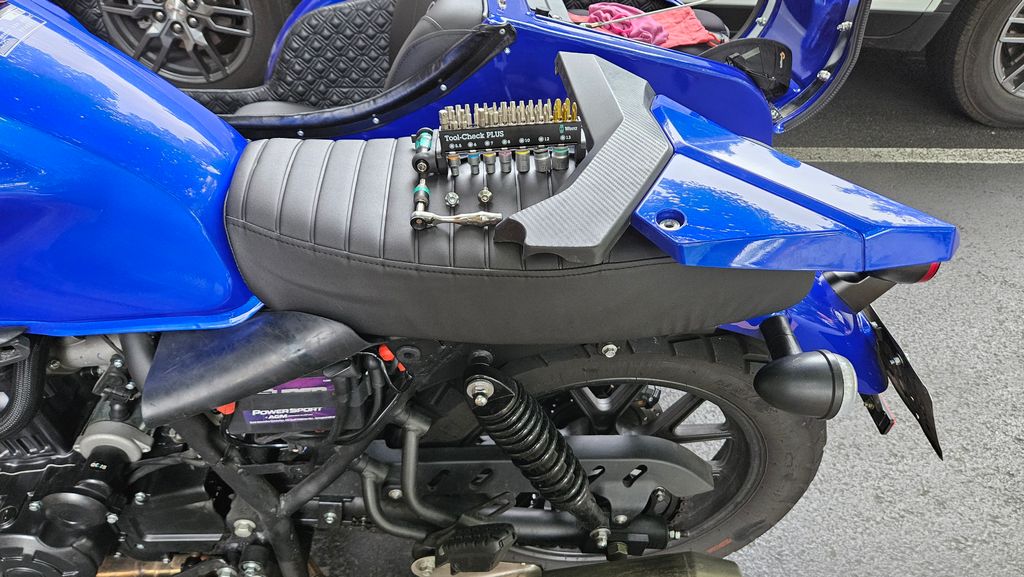
A Fork In the Road for Ural
The Ural Neo 500 represents a major shift in strategy for Ural as a motorcycle company. While we don't have an official MSRP yet, Ural's intent is for this bike to be considerably more affordable than the Gear Up line is. And we do have a ballpark ceiling for a US MSRP, which is pretty intriguing in and of itself.
What about tariffs, and the fact that information about them seems to keep changing over time? I asked about how US tariffs on items and vehicles from China might impact Ural's intended pricing models for the Neo 500. They said they've developed several potential tariff scenarios to try to game it out and be prepared. In all cases, they're aiming for an MSRP that's under $15,000.
As I previously mentioned, the Neo 500 is also meant to entice riders who are new to Ural; maybe smaller, maybe younger, and maybe even more women riders (though there are definitely already women who ride legacy Urals very proudly).
With that in mind, what's this smaller, easier-to-handle Ural weigh? The Neo 500 Prototype tips the scales at 310 kilograms, or just a hair under 683.5 pounds. That makes it nearly 50 pounds lighter than the claimed dry weight of a base Ural Gear Up, which is 730 pounds. But since the Neo 500 prototype is definitely easier to turn, it ends up feeling a bit lighter, still.
When I was chatting with the Ural folks after I'd spent time with the Neo 500 prototype, they showed me some mockups of very brightly colored variants of the Neo 500 platform. If you know my tastes, then you know that I'm definitely on board for more bright colors on bikes and other road vehicles, always.
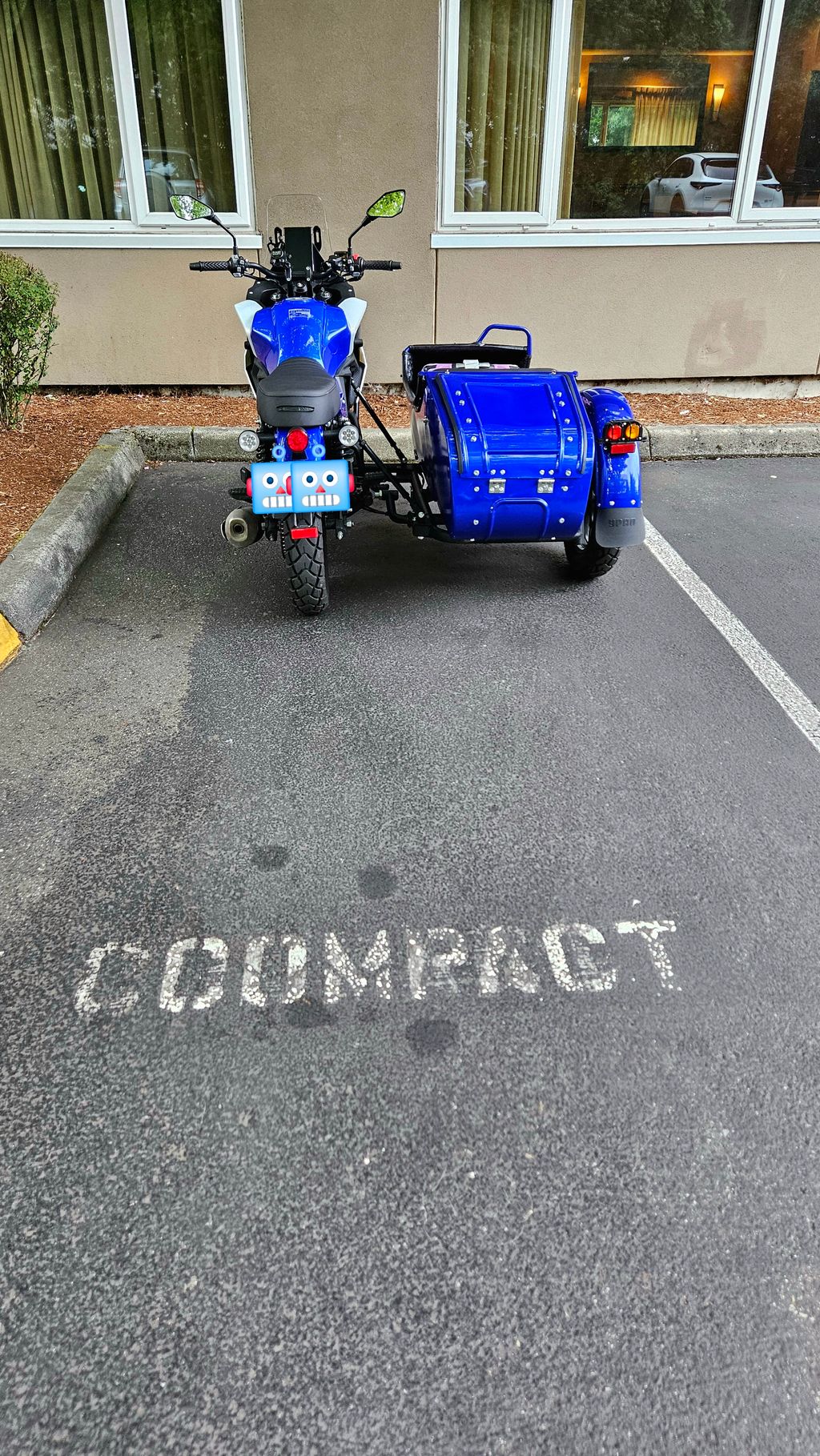
But the Neo 500 isn't intended to only be a new product for Ural. It's also intended to be the start of an entirely new platform, which will be the future of the entire brand. And, for the moment, Ural told me that it's also planning to put production of the legacy Gear Up line on hold completely.
The company will still continue to offer both parts and product support for Gear Ups, but regular production will be paused. Not completely stopped (at least, not at this point); they'll be looking into ways to make it more tenable down the line if they can.
Ural's betting big on the Neo 500 platform, which will come to encompass additional variants in the future, if all goes according to plan. Will it pay off? That all depends on whether people are ready to make the leap and at least throw a leg over and take one for a test ride.
Whatever the price point ends up being, in the US at least, the Ural Neo 500 will likely remain a lot less expensive than buying a new car. And you can haul quite a bit in it, making it pretty practical for everyday life.
Riding it all day long, I'm happy to report that it never got uncomfortably hot for me in the saddle. When seated in the sidecar, I accidentally found that the Magsafe mount on my phone case allowed me to easily stick my phone to a flat spot on the sidecar, since the whole thing is steel. I wouldn't feel like it was secure enough to leave there while riding, but it's something to keep in mind if you're stopped somewhere and you need someplace to put your phone.
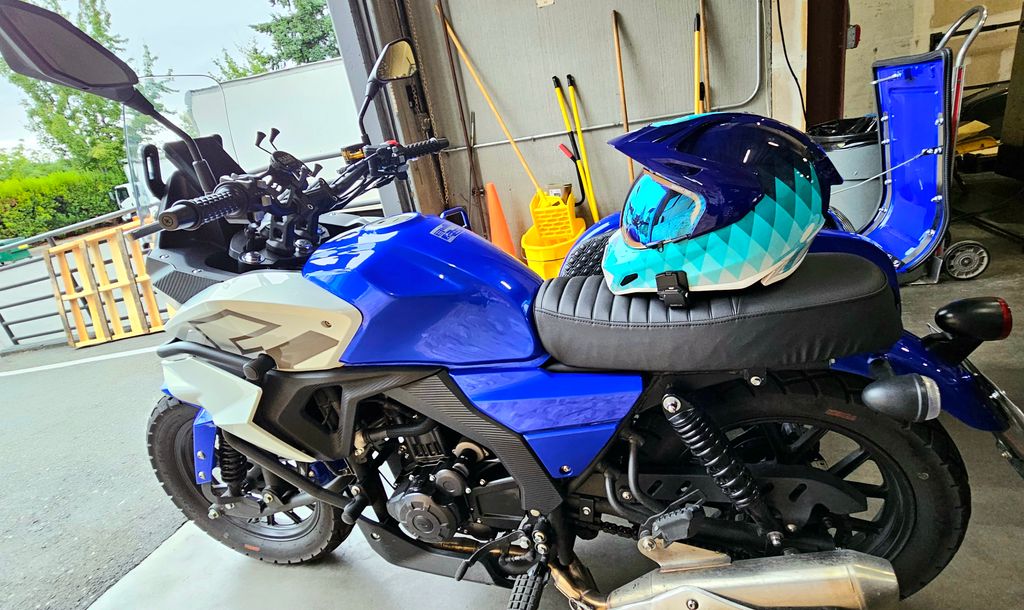
When Is The Production Bike Coming?
If all goes according to plan, Ural says they hope to have production bikes rolling out in early 2026. They're still hard at work hashing out all the changes they want; Ural told me there were over 127 pages of changes they made after getting their hands on Yingang's first attempt.
The process there has been very hands-on, with Ural engineers helping to guide the process on Yingang's end. See, while Yingang has been making its own sidecar motorcycles in China for a couple of decades, almost no one has the experience and expertise in the matter that Ural does, simply because it's been around and had the chance to learn what works and what doesn't over time.
The Ural folks seem excited about how things are progressing, and the fact that they've been able to already make so many changes and refine so many things since the project started. There's still more to be done, of course, but they stress that their partners at Yingang have so far been incredibly receptive to input and constructive criticism to make the Neo 500 what they want it to be.
It's an exciting and momentous time for Ural, and one unlike any other in the company's history. Though, to be fair, the company's history is full of once-in-a-lifetime things, just by virtue of the course of world history and sociopolitical change over time. It is truly a one-of-a-kind company, so will this intense period of change work out as well as it's hoping?
Stay tuned.







